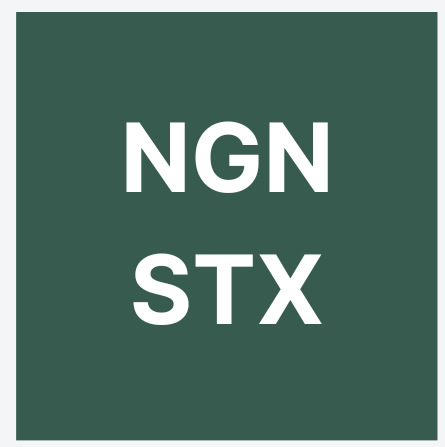First, Some Context: The Retail Crowd Is Here, and It’s Loud
Between January and June 2025, retail investors accounted for 39.3% of all domestic transactions on the Nigerian Exchange, outpacing institutional investors who came in at 32.5% (NGX Domestic & Foreign Portfolio Report, June 2025). That’s not just a stat, that’s a story.
And the story is this: regular Nigerians are stepping up. They’re downloading Bamboo, Trove, and Chaka. They’re reading headlines. They’re buying shares in companies they interact with every day; MTN airtime, banking with GTCO, or ordering Mr Biggs (a subsidiary of UAC of Nigeria Plc).
But here’s where it gets tricky.
I’ve noticed that a lot of people don’t know how to read the financial reports of the companies they are investing in. Not deeply. Not confidently. Not in a way that says “I’m not just betting — I understand this company.”
And I get it because that was me.
How I Learned to Read Reports (And Why Most People Won’t)
I started investing in 2022. I wasn’t trying to be Warren Buffett. I just liked finance. I liked understanding how money moved through companies. I liked seeing how ₦20,000 could grow and even pay me dividends in real cash in my bank account, just for owning part of a business.
But those reports?
They were chaos to me. Pages of numbers, jargon, and boardroom language. But the problem? I didn’t know what the hell I was reading.
I’d open a company’s Q1 report and see things like:
- “Profit after tax”
- “Comprehensive income”
- “ROE”
- “Working capital”
- “Diluted EPS”
And I’d be like, “Okay but… should I buy or nah?”
So I did the hard thing. I Googled everything. I downloaded finance textbooks (just to read a single chapter). I sat with annual reports like they were storybooks. Slowly, things started making sense.
And now? I’m here to make it easy for you. Not with buzzwords or hot takes, but with napkin math, simple logic to help you make smarter investment decisions.
What Is Napkin Math?
Think of it like street-smart investing.
Napkin math is shorthand for doing the basic, no-nonsense calculations that tell you:
- If a company is profitable
- If it’s paying you well (dividends)
- If it’s growing or just pretending to
- And whether its stock price makes sense
You don’t need a spreadsheet (yet). You just need the report, a calculator app, and this checklist.
Reports 101: What You’ll See, What You Should Care About
Quarterly Reports (Q1, Q3)
- Unaudited snapshots
- Best for tracking momentum
- Watch for: Revenue, EPS, PAT, YoY growth
Half-Year Reports (H1, H2)
- More detailed, sometimes come with interim dividends
- A good time to evaluate portfolio performance
Full-Year Audited Reports
- The real deal.
- Includes income statement, balance sheet, cash flow, management discussion, and auditor’s report
- Where you do your “deep napkin math”
The Napkin Checklist (Stick This on Your Wall)
| Metric | What It Means | Good Sign | Red Flag |
| Revenue | Sales made | Growing 10–15%+ | Flat or falling |
| Profit After Tax (PAT) | Final net profit | Growing YoY | Down consistently |
| EPS | Profit per share | Up YoY | Falling 2+ quarters |
| DPS | Dividend paid | Steady or rising | Cut or skipped |
| Payout Ratio | % of profit paid as dividends (DPS ÷ EPS) | 30–70% | 100%+ = not sustainable |
| Debt-to-Equity | Debt load vs assets | <1.5 | >2.0 |
| ROE | Return on equity | >15% | <8% |
| Cash Flow from Ops | Real business cash | Positive | Negative 2+ years |
When to Buy More, Hold, or Be Cautious
| Situation | Action | Why |
| Revenue ↑, PAT ↑, EPS ↑, DPS ↑ | Buy more | They’re growing and rewarding you |
| EPS flat, DPS stable | Hold | They’re steady, but not exciting |
| EPS ↓, DPS cut, debt ↑ | Be cautious | Something is wrong internally |
| 2+ red flags in a row | Re-evaluate | You may need to reduce or exit |
3 Real Examples, 3 Levels of Confidence
MTN Nigeria – Steady Giant With Rebounding Strength
Q1 2025 (Unaudited)
- Revenue: ₦1.06 trillion (↑40.5% YoY)
- PAT: ₦133.7 billion
- EPS: ₦6.38
- Free Cash Flow: ₦209.9 billion
- Debt/Equity: ~1.3
- Dividend: Not declared in Q1, but historically strong
Napkin View:
MTN is recovering well from FX hits in 2024. Free cash flow is robust. With a trailing P/E of ~16.1x, it’s not cheap — but for a utility-like telecom company with broad digital exposure, it’s not unreasonable.
| Metric | MTN Performance | Why It Passes |
| Revenue Growth | ₦1.06 trillion in Q1 2025 (↑40.5% YoY) | Strong sales momentum |
| Profit After Tax (PAT) | ₦133.7 billion in Q1 | Strong rebound from prior year’s loss |
| EPS | ₦6.38 (Q1), ~₦25.52 annualized | Healthy earnings per share |
| Dividend | Consistent history; expected in H2 | Known for solid payouts |
| Payout Ratio | Historically ~50–70% | Balanced and sustainable |
| Debt/Equity | ~1.3 | Manageable leverage |
| ROE | ~35% | Excellent capital efficiency |
| Cash Flow | ₦209.9 billion in Q1 (positive FCF) | Strong core operations cash generation |
My move? Hold. Buy on dips. Dividend reliability and nationwide presence make this a defensive long-term play.
United Capital (UCAP) – Nigeria’s Cleanest Dividend Play
H1 2025 (Unaudited)
- Gross Earnings: ₦23.76 billion (↑57%)
- PAT: ₦11.89 billion (↑54%)
- EPS: ~₦1.32 (annualized)
- Dividend: ₦0.30 interim per share
- ROE: ~26%
- Payout Ratio: ~45%
- Debt/Equity: 0.6
Napkin View:
UCAP is lean, efficient, and committed to dividend payouts. The growth in H1 is impressive. Its size isn’t massive, but it delivers like clockwork.
| Metric | UCAP Performance | Why It Passes |
| Revenue Growth | ₦23.76 billion in H1 2025 (↑57%) | Rapid top-line growth |
| Profit After Tax (PAT) | ₦11.89 billion (↑54%) | Profitable and expanding |
| EPS | ~₦1.32 (annualized) | Reasonable for its size |
| Dividend | ₦0.30 interim declared | Steady and shareholder-friendly |
| Payout Ratio | ~45% | Sensibly distributed profits |
| Debt/Equity | 0.6 | Low and conservative |
| ROE | ~26% | High returns on equity |
| Cash Flow | Operational cash flow positive | Efficient business model |
My move? Buy-and-hold. Solid dividend compounding vehicle, especially if you’re reinvesting year after year.
Ellah Lakes PLC – A Case Study in What to Avoid
Q2 2025 (Unaudited, Six Months to Jan 31, 2025)
- Revenue: ₦19 million (yes, million)
- Net Loss: ₦396.6 million
- EPS: –₦0.20 (trailing 12 months EPS: –₦0.34)
- Dividend: None
- Debt-to-Equity: ~4.5× (very high)
- ROI: –4.42%
- Cash Flow: Negative operating cash flow
Napkin View:
Let’s be blunt: Ellah Lakes fails every napkin test. It’s not making money. It’s not paying investors. It’s not growing sales. And it’s drowning in debt.
This is the kind of stock that might look “cheap” on Trove or Bamboo simply because the price per share is low, but don’t be fooled. Cheap isn’t the same as undervalued.
The fundamentals here are weak:
- Negative earnings.
- No dividend history.
- Absurdly high leverage.
- Poor return on investment.
| Metric | Ellah Lakes Performance | Why It Fails |
| Revenue Growth | Tiny sales (~₦19m) and flat/declining YoY | No business momentum |
| Profit After Tax (PAT) | Massive net losses in latest quarter & full year | Not profitable |
| EPS | Negative (–₦0.20 per share / –₦0.34 TTM) | No earnings |
| Dividend | No dividend declared | Doesn’t reward shareholders |
| Payout Ratio | Not applicable (no profit) | Can’t pay dividend sustainably |
| Debt/Equity | 4.5 × (excessive) | Company is highly leveraged |
| ROE / ROI | Negative (~–4%) | No return on equity or capital |
| Cash Flow | Operating cash flow is deeply negative | Core business burns cash |
My move? Avoid completely. This is not a dividend play, not a turnaround story, and not a growth stock. It’s a cautionary tale. If it ever improves, great — but based on current results, it doesn’t belong in any beginner portfolio.
What This Means for Napkin Math Analyses
With accurate metrics in hand, here’s how to apply your checklist for each stock:
- MTN Nigeria: EPS = ₦6.38; strong FCF; consistent earnings recovery.
- Ellah Lakes: EPS ≈ –₦0.34; negative cash flow; rising debt and no dividend history.
- United Capital: EPS ≈ ₦1.32; clear dividend track record; moderate growth.
From here you can:
- Estimate Fair Value (e.g. EPS × target P/E multiple),
- Check payout ratios (e.g. dividend ÷ EPS),
- Track debt metrics (if available),
- And assess dividend sustainability.
Reports Aren’t Just for Accountants; They’re for Owners
Let’s be honest: most people don’t read financial reports. And that’s fine if you’re just betting. But if you want to build, if you want to own, if you want to stop being the product and start being the shareholder, you’ll need to change that.
Reading a company’s earnings report is like reading your tenant’s rent update; you own a stake, and you deserve to know what’s happening under the roof.
It might feel technical at first. Some of the words will look like jargon. But after one or two reports, after a few napkin calculations and side-by-side comparisons, you’ll start to see patterns. You’ll start to see which companies are truly investor-focused, and which ones are just making noise.
Remember This
- You don’t need to be a finance expert to invest wisely.
- You don’t necessarily need to understand every footnote in an annual report.
- You don’t need to master everything in one go.
But you do need to start paying attention.
You need to ask:
- Did this company grow revenue?
- Did they pay me?
- Can they keep paying me?
- Is the price I’m paying today reasonable for the future income I expect?
If you can answer those four questions using Napkin Math, then you’re already ahead of the average investor.
And Finally
Let’s be clear: Napkin Math isn’t magic. It’s not going to protect you from:
- Sudden government policies
- FX devaluations
- Illiquidity in certain stocks (looking at you, Ellah Lakes and sometimes even Aradel)
For instance, MTN may look great on paper, but FX losses wiped out billions last year.
UCAP is lean, but operates in a financial system constantly pressured by monetary tightening.
And low-volume stocks can leave you stuck holding a position you can’t exit quickly, even if the fundamentals improve.
That said…
This guide gives you a grounded framework. It helps you ask smarter questions. It gives you tools to avoid hype, filter out junk, and focus on companies that actually perform.
You’ll still need patience. You’ll still need to size positions carefully. But if you stick to this approach:
- Buy quality,
- Track earnings,
- Reinvest dividends,
- And stay consistent,
…you’ll build something meaningful. Slowly. Simply. Smartly.
Our mailing list and WhatsApp tells you where your money should be.

Marketing Manager full time, finance enthusiast off the clock.


